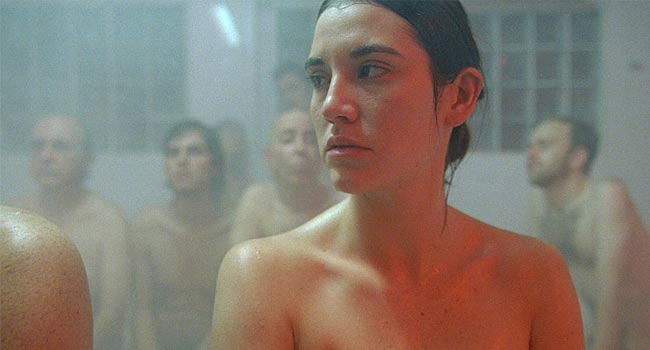
Even though most of the film ends up being a head-scratcher, there are still certain characteristics that can be appreciated.

Even though most of the film ends up being a head-scratcher, there are still certain characteristics that can be appreciated.
If you combined the provocative tenacity of Ulrich Seidl with the non-narrative structure and beautiful cinematography of Terrence Malick then you would get somewhere close to Carlos Reygadas’ baffling Post Tenebras Lux. There is a narrative found within the film but not only is it very limited, it is found within a storyline that bounces back and forth through time with very little dialog or sense of direction—the extreme opposite end of holding a viewer’s hand. During an interview Reyadas admitted that he demands a lot from the viewer in terms of figuring out what Post Tenebras Lux is all about, so consider this the first of several warnings.
The opening shot of Post Tenebras Lux is hands-down the best the film has to offer. A young girl (Rut Reygadas) stomps her way through muddy puddles gawking at the cows, horses, and dogs that surround her while she mutters “father” and “mother”. The camera switches back and forth between up-close shots of her chasing the camera to a first-person perspective view at her level. As night falls a thunderstorm rolls in and soon the lightning is the only thing that illuminates the screen. That is until a glowing red figure appears at the front-door step of a house. The devilish figure moves through each room of the house with a toolbox in hand until it settles on a room after starring down a little boy across the hall. Does it represent a guilty feeling father returning home from work or a child’s nightmare of their evil father? As with the rest of the film, the definitive meaning behind this is open for interpretation.

Most of the film is based around a family of four who live in a luxurious house in a remote area of Mexico. The relationship between Juan (Adolfo Jimenez Castro) and his wife Natalia (Nathalia Acevedo) is not a pleasant at the moment because of Juan’s dangerous temperamental behavior—on display in a hard to watch scene where he randomly punches one of his family dogs. Juan believes Natalia wants to break things off but promptly reminds his wife that they should stay together for the kids.
What stands out the most in Post Tenebras Lux are the magnificent visuals thanks to Alexis Zabe’s awe-inspiring cinematography. The most fascinating part of the visuals was the decision to use a fisheye lens that blurs and distorts everything around the edges, almost as if it was replicating an actual eye with peripheral vision. Sometimes we see from the perspective of the characters, and sometimes from the perspective of evil. Several images throughout the film will stick with you for a while, though dog beating, decapitation, and a sex orgy with a bunch of overweight sweat lodgers are not exactly pleasant memories.
Post Tenebras Lux feels like a personal film for Carlos Reygadas, maybe a little too personal as it ends up alienating viewers with its obscurity. For example, there are two separate scenes where we suddenly land in the middle of group of English boys playing rugby for reasons you have to presume are autobiographical for the director. This becomes especially apparent when you realize that the two young children are played by his own. It is not to say the film does not have a specific meaning or purpose, just do not expect to know what it is after the first watch. Even though most of the film ends up being a head-scratcher, there are still certain characteristics that can be appreciated.